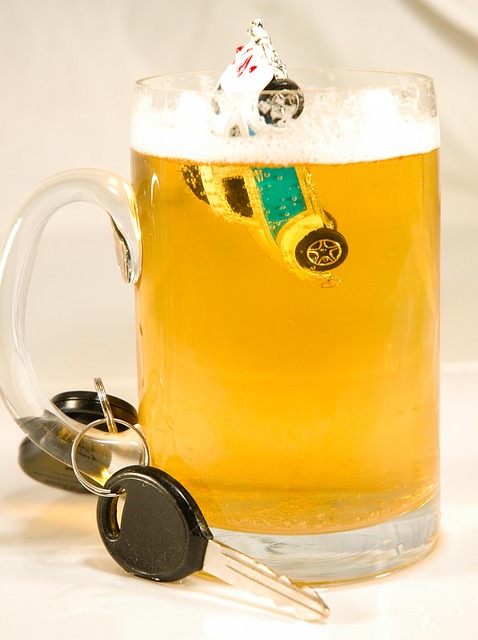Commercial Driver DUI cases are unique, governed by laws prioritizing public safety while accounting for commercial vehicles' advanced safety features and strict inspection protocols. Vehicle Safety Features such as airbags, ABS, ESC, and lane departure warnings can be crucial in reducing liability or providing exculpatory evidence. Recent case studies show these features, along with data logging systems, can challenge traditional DUI prosecution methods. Understanding the interplay between Vehicle Safety Features and DUI Law is essential for effective defense strategies, especially with evolving technologies like ADAS (Advanced Driver-Assistance Systems) that can detect hazards and mitigate collisions.
“In the realm of commercial driving, a DUI (Driving Under the Influence) charge can have severe repercussions. This comprehensive guide delves into the intricate world of Commercial Driver DUI Defense, offering a detailed look at both the legal landscape and emerging technological advancements. From understanding specific vehicle safety features that play a role in defense strategies to exploring how modern technologies impact impaired driving detection, this article provides critical insights for commercial drivers.
We examine successful case studies, analyze future trends, and emphasize the importance of staying informed about vehicle data in an ever-changing legal and technological environment.”
- Understanding Commercial Driver DUI Laws: A Comprehensive Overview
- The Role of Vehicle Safety Features in DUI Defense
- Advanced Technologies and Their Impact on Impaired Driving Detection
- Strategies for Commercial Drivers: Staying Safe and Protecting Your Rights
- Case Studies: Successful DUI Defense Using Modern Vehicle Data
- Future Trends: How Automotive Innovations Can Shape DUI Defense Practices
Understanding Commercial Driver DUI Laws: A Comprehensive Overview

Commercial driver DUI cases are governed by distinct laws that consider both public safety and the unique aspects of commercial vehicles. Understanding these laws is crucial for drivers, employers, and legal professionals alike. Key factors include enhanced vehicle safety features, such as advanced braking systems and electronic stability control, which play a role in mitigating penalties.
Unlike personal vehicles, commercial vehicles are subject to regular inspections and strict maintenance protocols. These requirements, mandated by the Department of Transportation (DOT), underscore the driver’s due diligence. When facing a DUI charge, these factors can be leveraged to argue for reduced sentences or alternative defenses, emphasizing the driver’s commitment to vehicle safety and regulatory compliance.
The Role of Vehicle Safety Features in DUI Defense

In the realm of Commercial Driver DUI Defense, understanding the role of vehicle safety features is paramount. Modern vehicles are equipped with a range of advanced safety systems designed to protect drivers and passengers alike. These include airbag deployment mechanisms, anti-lock braking systems (ABS), electronic stability control (ESC), and lane departure warning systems. During a DUI defense strategy, these features can significantly bolster an argument that the driver’s actions were not solely responsible for any accidents or injuries. Vehicle Safety Features and DUI Law are intricately linked; effective use of these safety mechanisms can help mitigate charges and penalties.
Additionally, some vehicles have data recording systems that log driving behavior, including speed, braking patterns, and sudden maneuvers. This data can either exonerate the driver in a DUI case or provide insights into their behavior to demonstrate impairment. The integration of such technology underscores the importance of understanding both Vehicle Safety Features and DUI Law to navigate these complex legal scenarios effectively.
Advanced Technologies and Their Impact on Impaired Driving Detection

Advanced technologies have significantly impacted impaired driving detection, particularly in commercial vehicles equipped with sophisticated safety features designed to enhance driver behavior and vehicle performance. These technologies include collision avoidance systems, lane departure warnings, and adaptive cruise control, which work together to monitor and adjust driving patterns in real-time. By analyzing data from sensors and cameras, these systems can detect signs of impairment that may be missed by traditional law enforcement methods, such as field sobriety tests. This integration of vehicle safety features with DUI law is transforming the way authorities identify and address drunk or drugged driving among commercial drivers.
Moreover, some modern vehicles are equipped with data logging capabilities that record driving behavior over extended periods, providing a comprehensive historical record for analysis. This allows law enforcement to compare current driving patterns against established baselines, further enhancing their ability to detect impaired driving. As these technologies continue to evolve and become more widespread, they are expected to play an increasingly critical role in maintaining road safety, particularly in high-risk sectors like commercial trucking.
Strategies for Commercial Drivers: Staying Safe and Protecting Your Rights

Commercial drivers face unique challenges when it comes to DUI (driving under the influence) cases due to the nature of their work and heightened scrutiny from regulatory bodies. Staying safe on the road and knowing how to protect your rights are essential strategies for navigating these legal complexities. One key aspect is understanding vehicle safety features. Modern commercial vehicles are equipped with advanced technology, such as collision avoidance systems, lane departure warnings, and electronic stability control, which can significantly reduce the risk of accidents caused by impaired driving.
By utilizing these features and adhering to strict safety protocols, drivers can build a robust defense against DUI charges. Additionally, familiarizing oneself with state-specific DUI laws is crucial. Commercial drivers should be aware of reduced blood alcohol limits, strict penalties for commercial vehicle operators, and the legal implications of even trace amounts of alcohol in their system. Regular training sessions on drug and alcohol testing procedures, as well as staying informed about policy updates, can empower drivers to make smart decisions and protect themselves from unfounded accusations.
Case Studies: Successful DUI Defense Using Modern Vehicle Data

In recent years, case studies have emerged showcasing successful DUI (Driving Under the Influence) defenses centered around modern vehicle safety features. These advancements in automotive technology offer a unique defense strategy by providing data that can challenge traditional DUI prosecution. For instance, advanced driver-assistance systems (ADAS) like automatic emergency braking and lane departure warning systems can demonstrate a driver’s attempt to avoid an incident, potentially mitigating the charges.
Vehicle Safety Features play a crucial role in these defenses by presenting alternative interpretations of events. By analyzing data from onboard sensors and cameras, attorneys can construct narratives that highlight the driver’s responsibility and attempt to minimize their culpability. This shift towards data-driven evidence is particularly impactful in the context of DUI Law, where traditional field sobriety tests and blood alcohol level measurements are often the primary pieces of evidence.
Future Trends: How Automotive Innovations Can Shape DUI Defense Practices

The future of Commercial Driver DUI defense is closely tied to the advancements in vehicle technology, particularly safety features designed to prevent accidents. As vehicles become more autonomous and equipped with sophisticated sensors, it’s expected that DUI law interpretations will evolve accordingly. For instance, advanced driver-assistance systems (ADAS) can detect potential hazards, alert drivers, and even intervene to avoid collisions, potentially mitigating fault in DUI cases.
These innovations challenge traditional notions of driver impairment by introducing factors beyond human control. As vehicle safety features continue to improve, defense attorneys will need to adapt their strategies, focusing on understanding how these technologies interact with DUI laws. Interpreting liability in light of these new systems requires a nuanced approach, considering not just the driver’s actions but also the role of autonomous features in accident prevention and potential errors.
Commercial drivers face unique challenges when it comes to DUI (Driving Under the Influence) cases due to the strict regulations and advanced technologies involved. Understanding the intricate interplay between vehicle safety features, such as alcohol sensors and data recording systems, is crucial for defense strategies. As technology advances, automotive innovations like sophisticated driver monitoring systems offer both potential pitfalls and defenses. By staying informed about these developments, commercial drivers can protect their rights, ensure safety, and navigate the legal landscape effectively.






